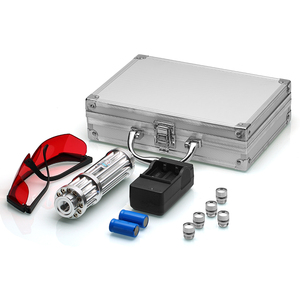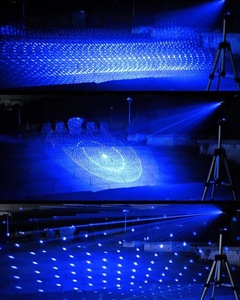(423 products available)























































































































































































































A guilding light is any light source used to guide or direct. It is used in various applications, including transportation, safety, and navigation. There are several types of guilding lights, including the following;
LED Gilding Lights
Light-emitting diodes (LED) guilding lights are widely used due to their high efficiency and long lifespan. They are used in various applications, including automotive lighting, architectural illumination, and electronic displays. They are favored for their brightness, durability, and versatility.
Neon Gilding Lights
Neon guilding lights are used in signs and lighting displays. They produce a bright, eye-catching glow in different colors. They are commonly used in commercial signage and decorative lighting due to their vibrant appearance and low power consumption.
Fiber Optic Gilding Lights
These lights use thin strands of glass or plastic to transmit light. They create luminous effects in interior designs, decorative lighting, and telecommunications. They are appreciated for their ability to create dynamic lighting and designs and for their use in applications where electrical conductivity is a concern.
Halogen Gilding Lights
They are a type of incandescent light guilding lights. They are known for their bright, white light with high color rendering. They are often used in outdoor lighting, automotive headlights, and display lighting. They are preferred for their ability to produce a bright light and for their dimming capabilities.
Metal Halide Gilding Lights
These are high-intensity discharge (HID) lights. They are known for their high brightness and efficiency. They are commonly used in large areas such as stadiums, street lighting, and industrial spaces. They are favored for their long-lasting brightness and effectiveness in large-scale applications.
Incandescent Gilding Lights
These lights use a traditional filament design. They are known for producing a warm, inviting glow. They are often used in residential lighting and decorative fixtures. They are cherished for their cozy ambiance and natural color rendering capabilities. However, they are less efficient than other types of lighting.
Gilding lights are used to illuminate the gilding or gold leafing on artwork, frames, mirrors, or architectural details. They serve to enhance the beauty and brilliance of the gilding, making it stand out and adding a touch of elegance and sophistication to the spaces where they are installed. Here are some of their features and functions.
Adjustable Arms or Heads:
Some gilding lights come with adjustable arms or heads. This allows users to direct the light precisely where it is needed. This feature is important when working on detailed gilding projects. It ensures that the light is focused and reduces the chances of accidental damage.
Dimmer Switches
Gilding lights with dimmer switches allow users to adjust the brightness. This creates the desired ambience and minimizes the harsh glare. Dimming the lights can reduce the potential damage to the gilding over time.
Color Temperature Control
Some gilding lights allow users to adjust the color temperature. This ensures that the light complements the specific type of gilding or gold leaf used. The feature is important for achieving the desired aesthetic effect.
Energy-Efficient Bulbs
Many guilding lights come with energy-efficient bulbs. For instance, LEDs and fluorescent bulbs. The light bulbs have a long lifespan and lower energy consumption. These lights are popular among environmentally conscious consumers.
Power Source
Guilding lights can be powered differently. For instance, battery-powered or AC-powered. The battery-powered options are more portable and convenient. They eliminate the need for external power sources. AC-powered lights offer a consistent and reliable power supply.
Material and Finish
The materials used to construct guilding lights affect their aesthetics and durability. Commonly used materials include brass, antique black, and brushed nickel. The finish can be added to improve the light's appearance complement the gilding.
Mounting Options
Some guilding lights are mounted on the wall or ceiling. Others are placed on stands. The mounting options give users the flexibility to install the lights in different locations depending on their specific needs.
Highlighting Gilded Surfaces
Guilding lights cast light on gilded surfaces. This creates a shimmering effect that accentuates the gilding's reflective properties. The highlights and shadows add depth and dimension to gilded artwork and objects.
Task Lighting
They provide task lighting for artisans involved in gilding projects. The bright and focused light enables artisans to see the details clearly when applying gold leaf or working on gilded surfaces. This results in more accurate and precise work.
Decorative Lighting
Gilding lights serve as decorative lighting. They enhance the ambience of a space. They create a dramatic and sophisticated effect in homes, galleries, and museums. They draw attention to gilded artwork and architectural details, making them focal points in the room.
Preservation
Proper lighting helps in the preservation of gilded objects and artwork. The adjustable features of guilding lights allow for the customization of lighting levels. This minimizes the potential damage that can be caused by UV rays and excessive heat. This protects the integrity of the gilding over time.
Guilding lights are used in various scenarios, especially within the realms of art, craftsmanship, and interior design. Here are some common scenarios where guilding lights are applied:
Artistic Lighting Fixtures
Gilded chandeliers and guilding lights are often used in lighting fixtures. This is in places such as; luxury hotels, museums, and palaces. This ensures the combination of illumination and opulence. Also, it adds a touch of drama and elegance to the space. Additionally, the gilding can be applied to the metalwork, shades, or other decorative elements of the lighting. This enhances their aesthetic appeal and value.
Architectural Lighting
Guilding lights can be used in lighting systems. This is in the case of; walls, ceilings, moldings, and other features. This emphasizes and highlights the intricate details and craftsmanship of a structure. This is especially in historical landmarks and high-end residential and commercial properties. Here, the lighting creates a warm, inviting glow that draws attention to the beauty and history of a place.
Artworks and Sculptures
Lighting is crucial in the display of gilded artworks, such as paintings and sculptures. This is in galleries and museums. Proper lighting techniques are applied to ensure the enhancement of the shimmering effects of the gold leaf or guilding. This draws visitors' attention to the intricate details and brilliance of the gilded pieces.
Theatrical Lighting
In the world of theater and performance, guilding lights are used to create dramatic effects and highlight ornate set pieces, costumes, and props. Here, the lights can be guilded with metals such as gold leaf or other reflective materials. This adds a touch of glamour and visual impact to the production.
Luxury Retail Spaces
Many high-end retail establishments utilize guilding lights to showcase their products and create an atmosphere of luxury and exclusivity. Here, the lighting accentuates the glamor and craftsmanship of designer goods, jewelry, and other luxury items.
Religious and Historic Sites
Guilding lights are traditionally used in lighting fixtures, altars, icons, and other elements within religious spaces. This is in places such as churches, temples, and monasteries. Here, the lighting creates an atmosphere of reverence and grandeur. Additionally, it highlights the ornate details of these sites. Further, they can also be used to illuminate and accentuate the historical and architectural features of ancient ruins, castles, and other historic places. This is in a way that enhances their beauty and mystique.
When selecting a gilding light for a space, considering the needs and preferences of the space's users is important. Here are some things to consider.
Scale and Size
When choosing a light fixture, it is important to consider the scale and size to ensure that the fixture is proportionate to the room. If the room is small, it would not make sense to choose a large fixture that would overwhelm the space. On the other hand, a small fixture might get lost in a large room.
Consider the Style
When choosing a light fixture, it is important to consider the style of the room where it will be placed. A modern light fixture would look out of place in a room that has a more traditional style. On the other hand, a more traditional light fixture would not work well in a room that has a modern style.
Quality of the Light
When choosing a light fixture, it is important to consider the quality of light it will provide. Some fixtures cast a harsh, bright light that can be unpleasant, while others provide a soft, diffused light that is more pleasing. Take the time to look at the different options and choose the one that will provide the best quality of light for the space.
Ease of Maintenance
It is also important to consider how easy the light will be to maintain. Some lights require more upkeep than others, and it is important to factor that into the decision making process. Choose a light that will be easy to take care of so that it will continue to look its best for years to come.
Electrical Configuration
The electrical configuration of a room can have a big impact on how well a light fixture works in that space. For example, if there are several outlets in one area, it might make more sense to plug in a lamp instead of relying on overhead lighting.
Installation and Maintenance
Installation and maintenance are important factors to consider when choosing a lighting system. How easy or difficult the process is can affect costs and downtime.
Q1. Does a light dimmer on a mirror affect how well it will be?
A1. Yes, it can. If the dimmer light is too low, it can affect visibility. However, some people use low-light settings to help with makeup looks because they want to see how it will look in dim lighting.
Q2. What kind of bulbs do dimming bathroom mirrors use?
A2. Most of them use LED light bulbs. They are energy efficient, and the LEDs used in the mirror are long-lasting. In some cases, the bulbs are integrated into the mirror, so buyers won't have to worry about finding compatible bulbs.
Q3. Are bathroom mirrors with dimming lights easy to maintain?
A3. Yes. They are as easy as maintaining regular bathroom mirrors. Users just have to make sure the LED lights stay clean so they can provide clear illumination. They also have to make sure the dimming function works properly by keeping the remote or touch screen panel clean.